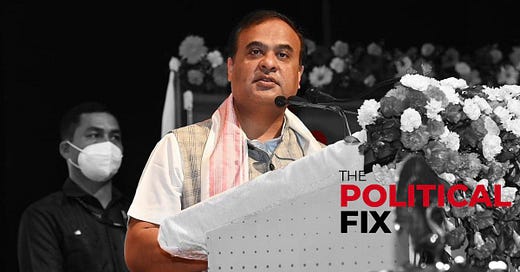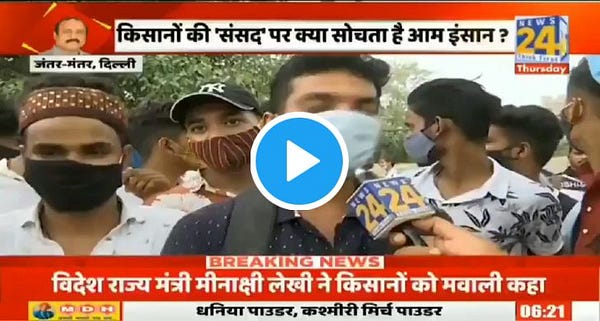The Political Fix: What will happen to the North East if Himanta tries to become Assam’s Adityanath?
A newsletter on politics and policy from Scroll.in.
Welcome to The Political Fix by Rohan Venkataramakrishnan, a newsletter on Indian politics and policy. To get it in your inbox every week, sign up here.
Request: Our small team wants to cover the big issues. That is why we are appealing for contributions to our Ground Reporting Fund. If you’d like to assist our effort, click here.
The Big Story: Border disorder
Politicians are insisting that “no one can take even an inch” of land and promising to kill armed personnel who cross over into their territory. Six security personnel have already been killed. Even after discussions, leaders on both sides took to Twitter to pin the blame on the opposite number. One side has begun a blockade preventing vital goods from crossing the border. Now even satellite imagery might come into play to determine whose forces crossed over, and where the border should be demarcated.
This isn’t the India-China or India-Pakistan border dispute. The boundary in question lies inside India, between the two Indian states of Assam and Mizoram. Technically, both of them are ruled by the same governing coalition, led by the Bharatiya Janata Party.
So how did they get here?
The current tensions between the two states dates back to October 2020, when the Assamese alleged that Mizoram residents had built huts on their land. What followed was “a controversial ‘eviction drive’ by the Assam government, violent clashes, an alleged abduction that culminated in a custodial death in Mizoram, the bombing of two schools in the dead of the night and a blockade that lasted for the better part of three weeks”, as Scroll.in has reported.
Matters had been tense since then, leading to several clashes over the last ten months. Something similar took place last week as well. Tora Agarwala reported:
“This time tensions flared up a few weeks ago, when the Assam Police destroyed a stretch of plantations of Mizoram residents in a forest area that Assam claims as part of Hailakandi. Then, Assam accused Mizoram of not just building a road but even a police post on its side of the territory. On July 26, an Assam Police team went over to ‘discuss’ the matter...
Around afternoon, recalls Abdul Ali Laskar, a truck driver, loudspeakers in Lailapur rang out with announcements for villagers to gather at the border as a ‘show of strength’. No one knows who made the announcements, says Laskar, but he went anyway, to assert ‘our claim’ on the land.
Around the same time, a rumour swept through Mizoram’s Vairengte village. Isack Z says they heard that Assam Police had come with 200 men, overrun the CRPF team at the border and marched into Mizoram. ‘We got angry. How can they just enter like this?… So we went to the border,’ Isack Z says.”
Each side has a different view on what happened next. Mizoram claimed that 200 armed Assam police personnel “forcibly crossed the duty post manned by CRPF personnel stationed there and overran a duty post manned by 1 (one) section of Mizoram police personnel”, and then that “a volley of tear gas canisters and grenades were launched at Mizoram Police followed by firing from Assam side.”
Assam, however, claims that its team of police and administrative officials “were surrounded and attacked by a mob of miscreants from the Mizoram side, which was visibly supported by the Mizoram Police” and that “the Mizoram Police opened fire on the Assam officials and civilians, who had by then gathered there, from two dominating high features with automatic weapons including [Light Machine Guns].”
The ensuing clash saw Assam police personnel killed and dozens injured. Remarkably, both chief ministers – who had just days before sat in a meeting with Union Home Minister Amit Shah about border disputes – took to Twitter to complain. They even tagged Shah to bring their squabbling to his attention.


What followed was nearly a week of tension, including an unofficial blockade of goods from Assam to Mizoram and both sides refusing to pull back their forces, despite prompting from New Delhi.
Police forces on either side also filed cases, not just against individuals involved in the border clash, but also politicians. An Assam Police team turned up in Delhi looking for Mizoram Rajya Sabha Member of Parliament K Vanlavena who, in a video that went viral, not only defended the killing of Assamese police personnel, but also threatened that anyone who crossed the borders would also be killed.
Meanwhile, Mizoram’s police filed a case against six officials from Assam – including the state’s chief minister, Himanta Biswa Sarma. Even BTS stans got involved as Mizoram K Pop fans raised the pitch online.
More tensions followed, with both sides refusing to answer each other’s summons. Sarma called for the investigation to be handed over to a neutral agency.
On August 1, however, there seemed to finally be some softening of positions.

The expectation now is that both states will drop the police cases, at least against the politicians. According to NDTV, “The Centre has told both the states that their officers and forces will not be allowed to carry arms while visiting the conflict zone which is now manned by central forces.”
Even if the Union government is able to prevail upon both sides to step back from the brink at the moment, it is unlikely that this will be the last time Assam’s border disputes make news, for a few reasons.
First, the Assam-Mizoram disagreement dates back decades, relating to British-era demarcations of where Mizo territory begins. The British first carved out Mizo land from Assam in 1875, in consultation with Mizo chiefs. But, a separate demarcation was carried out in 1933, this time primarily by bureaucrats. Mizoram – which was again carved out of Assam after Independence, in 1972 – goes by the 1875 line, while Assam sees the 1933 border as the real one.
Second, there is an ethnic element to the border dispute, as Arunabh Saikia explained last year:
“Interviews with local residents, particularly in Mizoram, suggest that the border row has precipitated older anxieties. ‘This is not a fight between the original Assamese people and the Mizos,’ said Zion Lalremruata, a farmer leader who hails from Vairengte. ‘What is happening here is illegal Muslim migrants want to take over the land of Mizoram and settle there as their population is always increasing and land in Assam is scarce.’
These fears are not new in the North East, where local communities considered ‘indigenous’ to the region believe that their land is under siege from unabated migration from Bangladesh...”
Third, there is Assam’s history. The state is much larger in both territory and population than its North East neighbours, even though several of them – Mizoram, Nagaland and Meghalaya – were carved out of Assam. As a result, it is seen as the elder sibling of the region, imposing its ways on the smaller neighbours. Assam has border disputes, which have sometimes turned violent, with Nagaland, Meghalaya and Arunachal Pradesh.
Finally, there is Sarma. A Congress leader who left for the BJP after being sidelined in Assam, Sarma is often credited with expanding the saffron party’s footprint in the North East. He took over as chief minister of Assam earlier this year, in what is a relatively unusual example of one leader – former CM Sarbananda Sonowal – giving way to another without conflict. The appointment was seen as a reward to Sarma for his dogged efforts in broadening the BJP’s base in the region.
But going from being the North East “captain” for the BJP to the leader of its biggest state is not an easy transition, not least because it super-charges all the fears of the other regional leaders that they will be dominated by Assam. Sarma was much more belligerent than one might expect from a chief minister over the last week, tweeting out videos that were clearly intended to provoke Assamese sentiments and sell the state’s narrative.
Why would he do that? Here is Arunabh Saikia again:
“What makes these seemingly confrontational gestures stranger is that Sarma only stands to lose clout in the region. His leverage among local parties in the smaller tribal-majority states in the North East played a key role in cementing his position and facilitating his sharp rise within the BJP...
What explains these seemingly ungainly moves by a politician often branded as the North East’s ‘Chanakya’, after ancient India’s most wily political thinker?
Just like his colleagues, political commentators are also struggling to make sense of the recent events. But the larger consensus among observers of politics in the region seems to be that Sarma’s actions were geared towards strengthening his position in Assam.”
In other words, Sarma has to make the transition from the BJP’s regional coordinator into Assam’s Adityanath. What would such an effort mean in a region where insurgencies are still alive and sub-national fears about being overrun are much stronger than elsewhere?
Linking Out

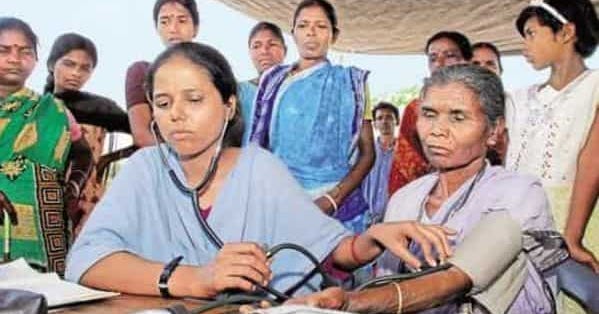



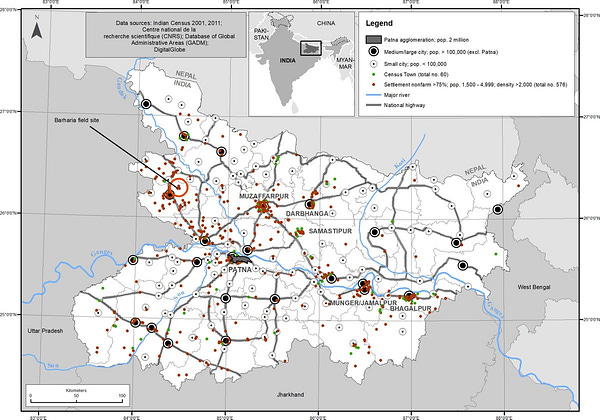
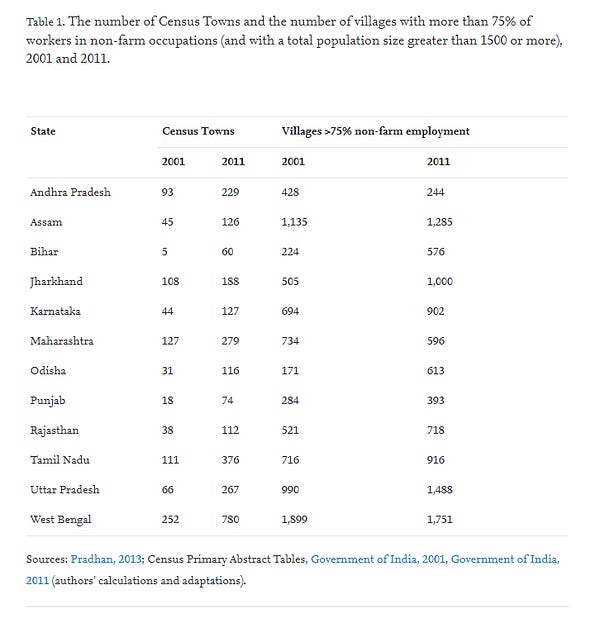

Can’t make this up
TV reporters, at least some of them, appear to be fed up.
Thanks for reading the Political Fix. Send feedback to rohan@scroll.in.

